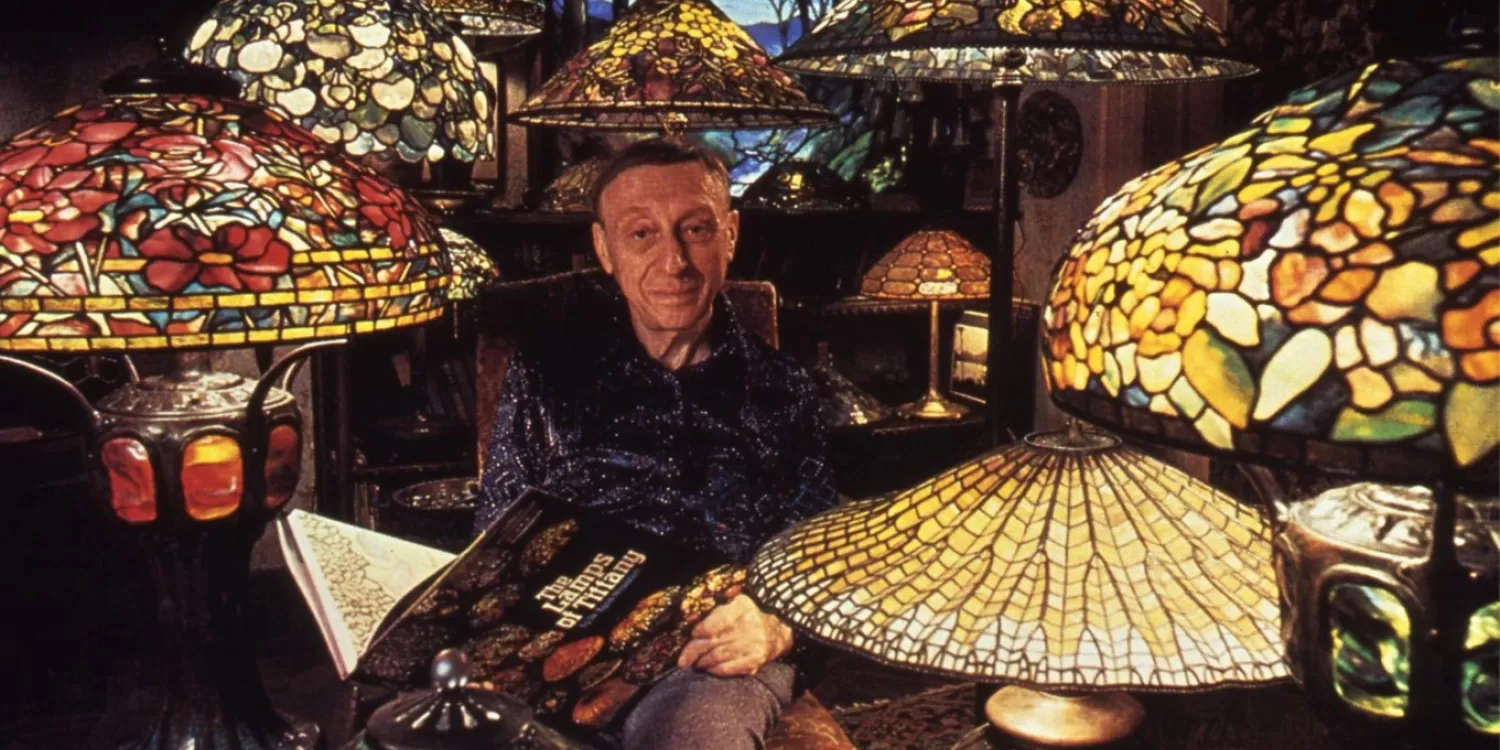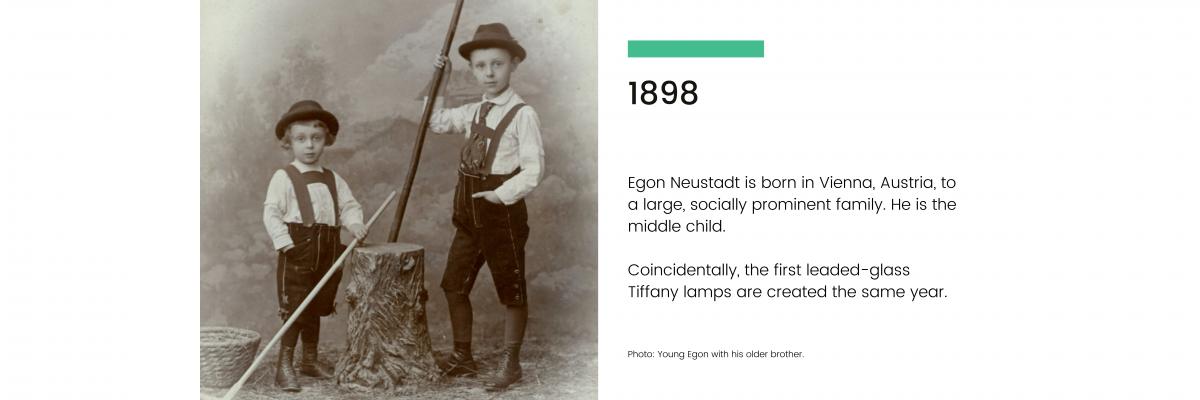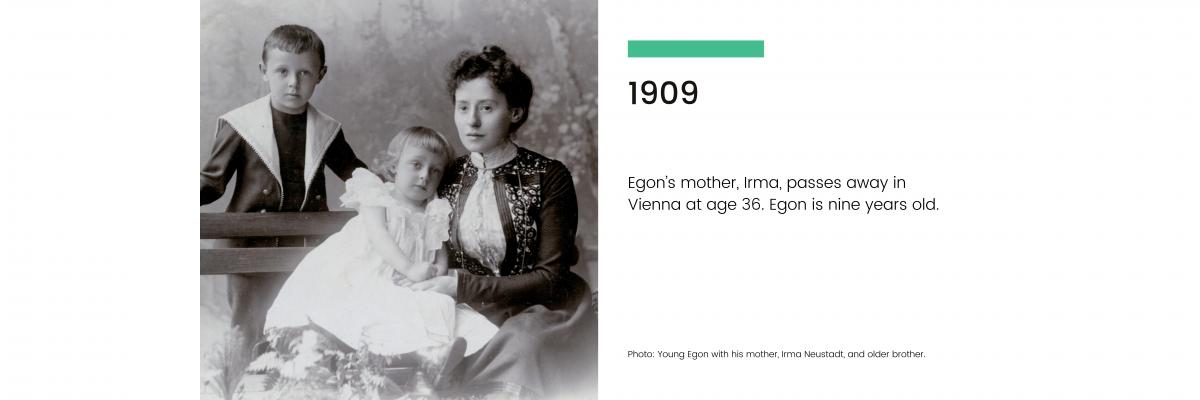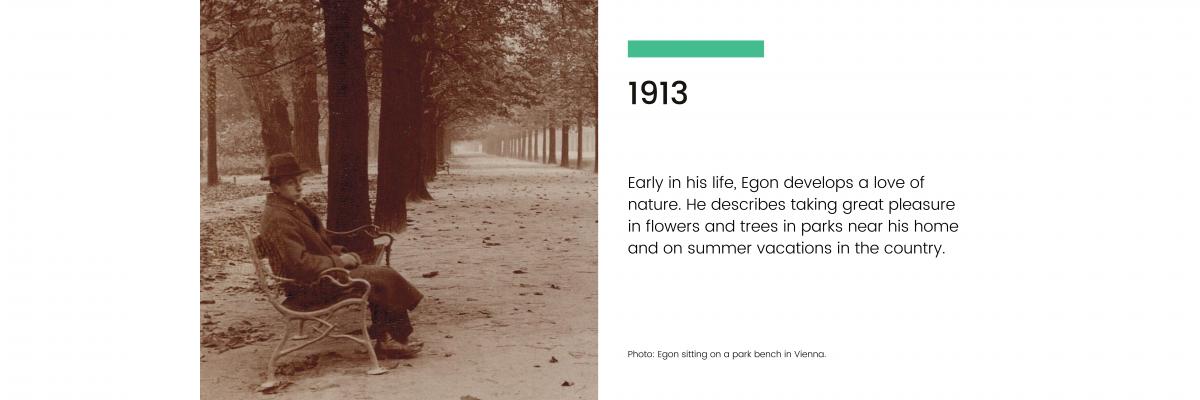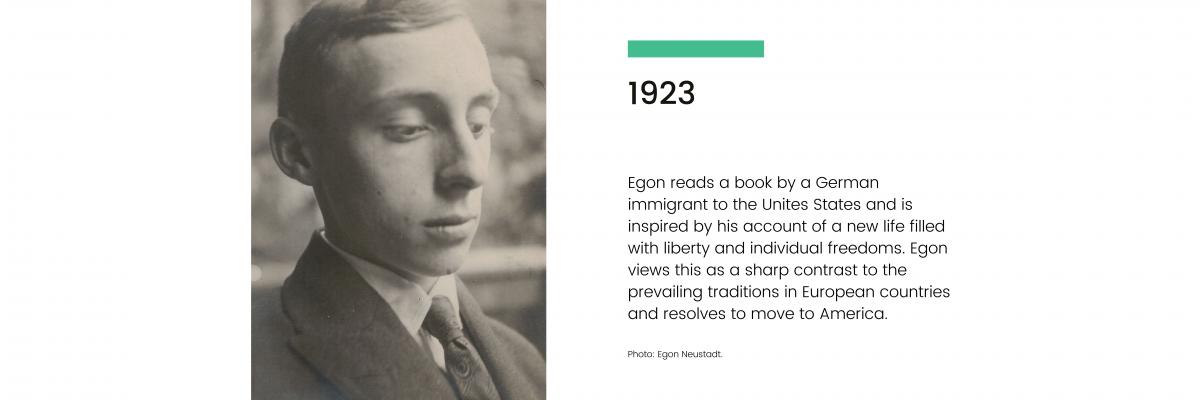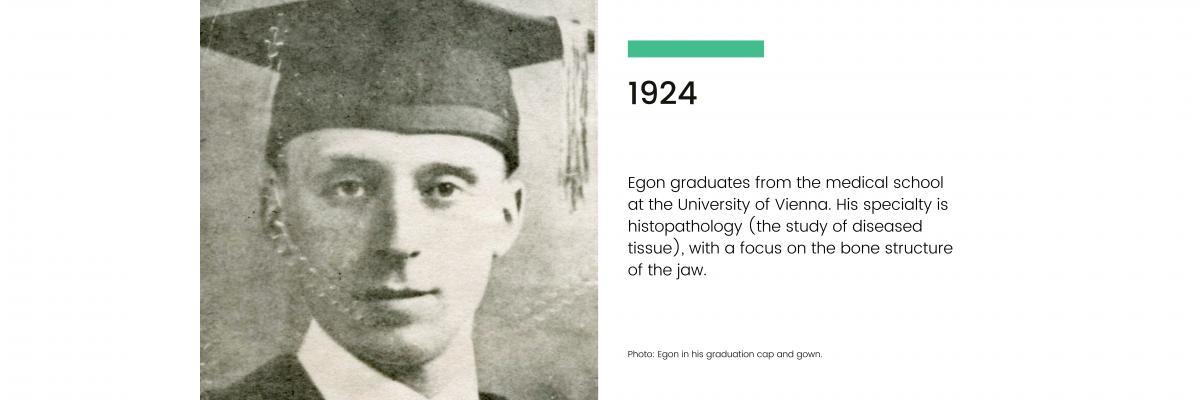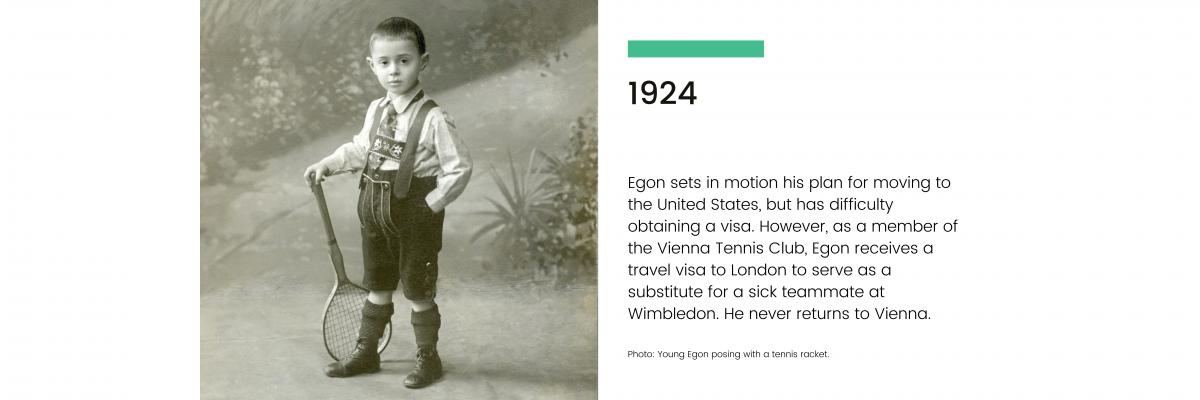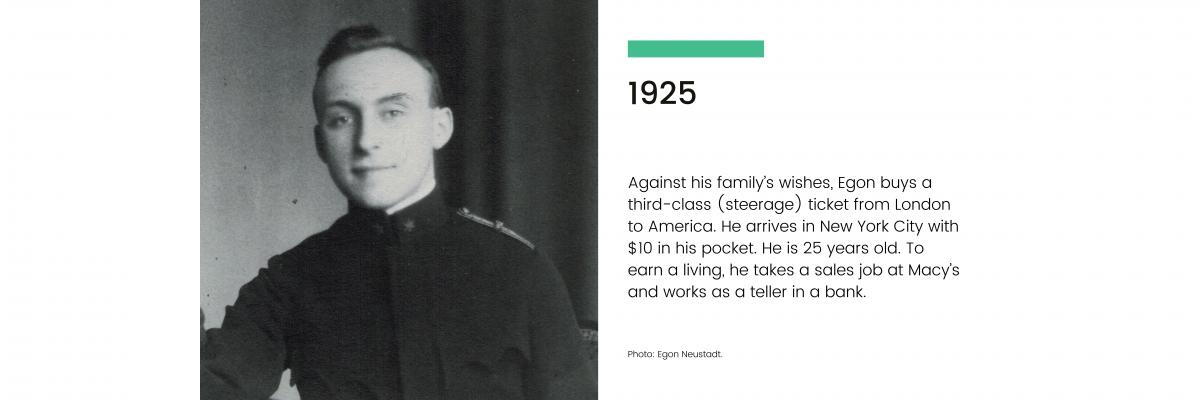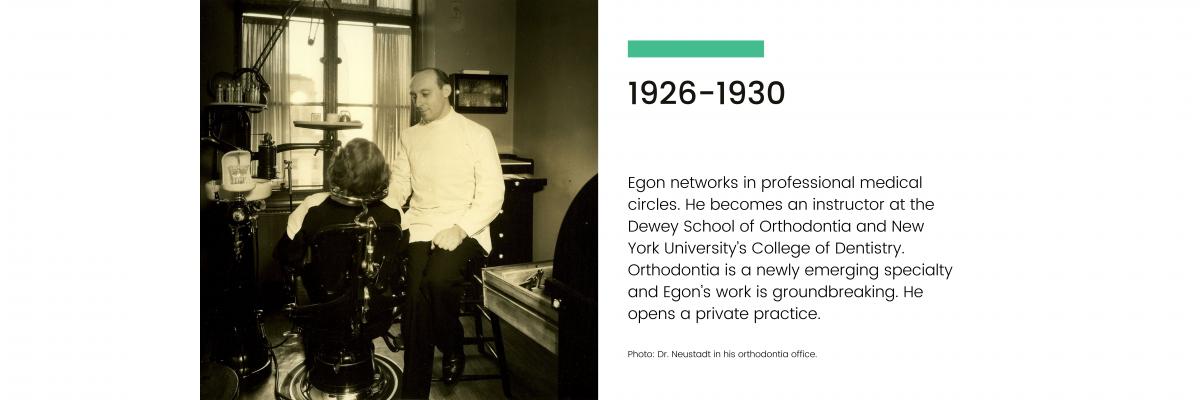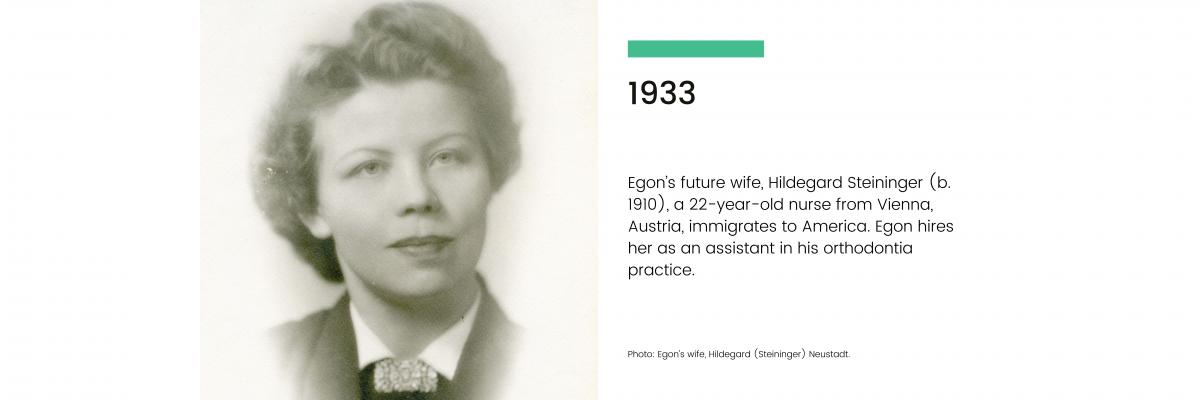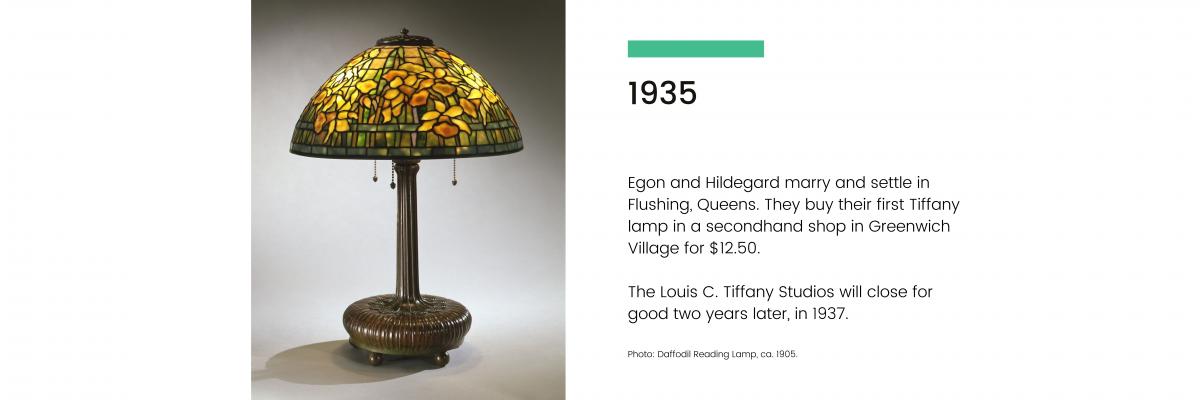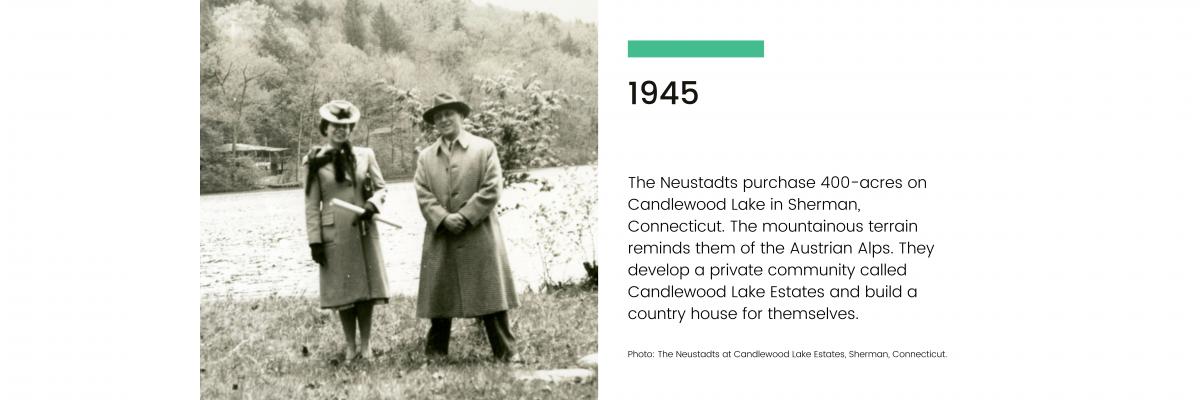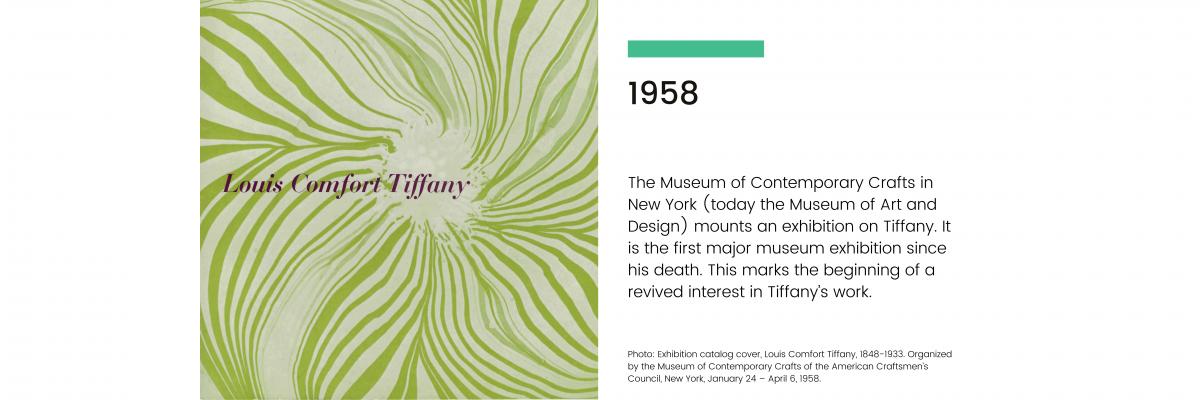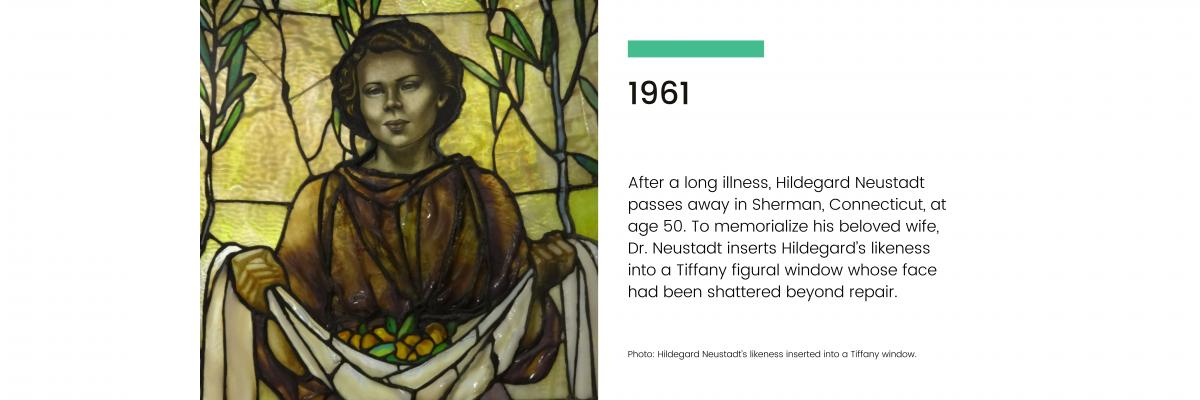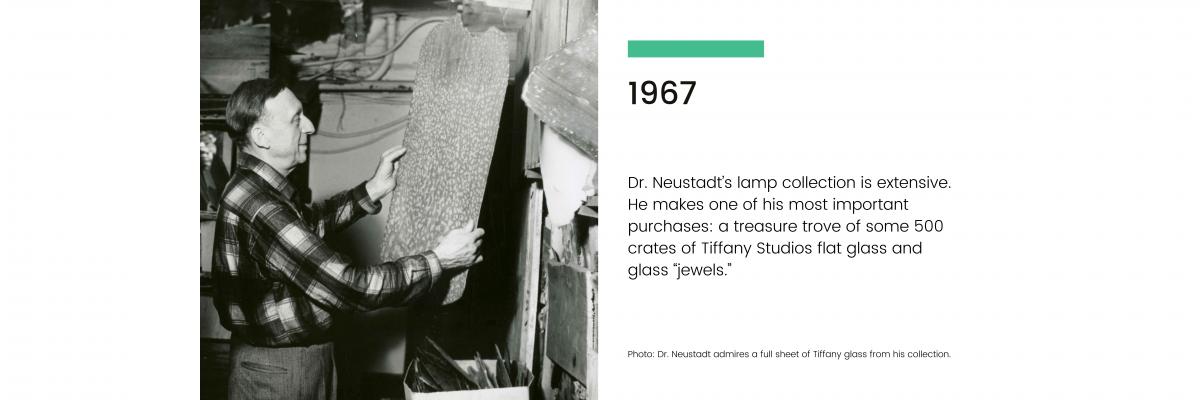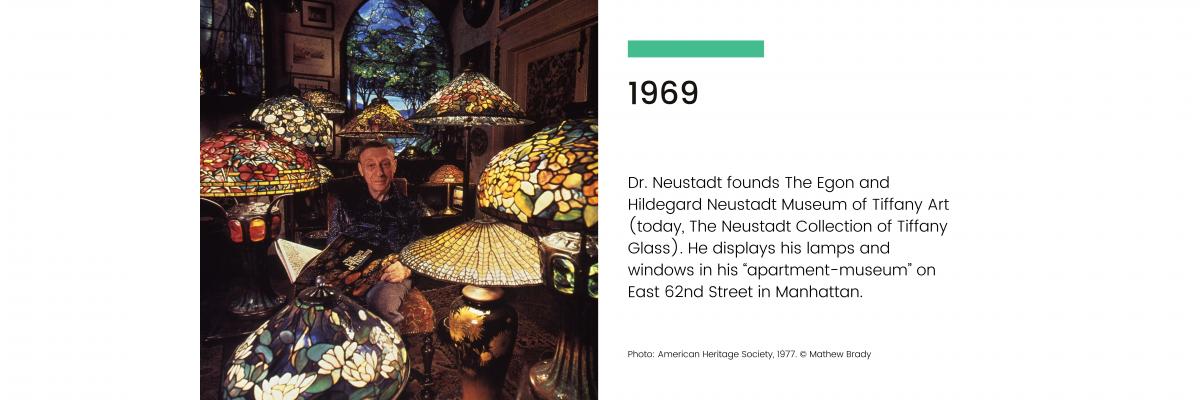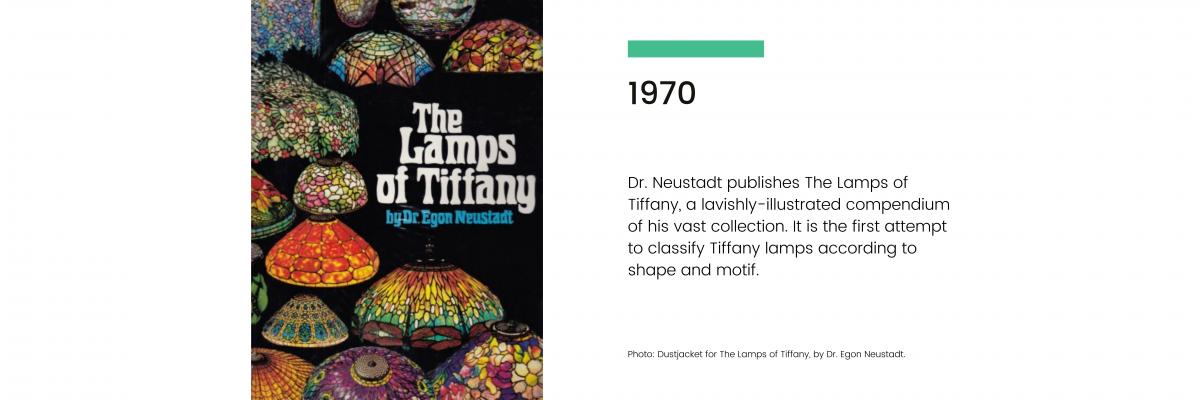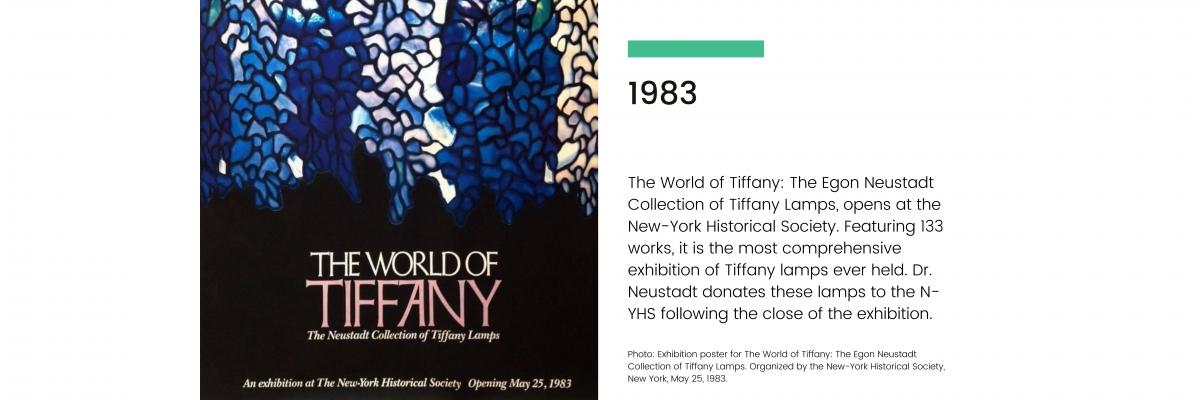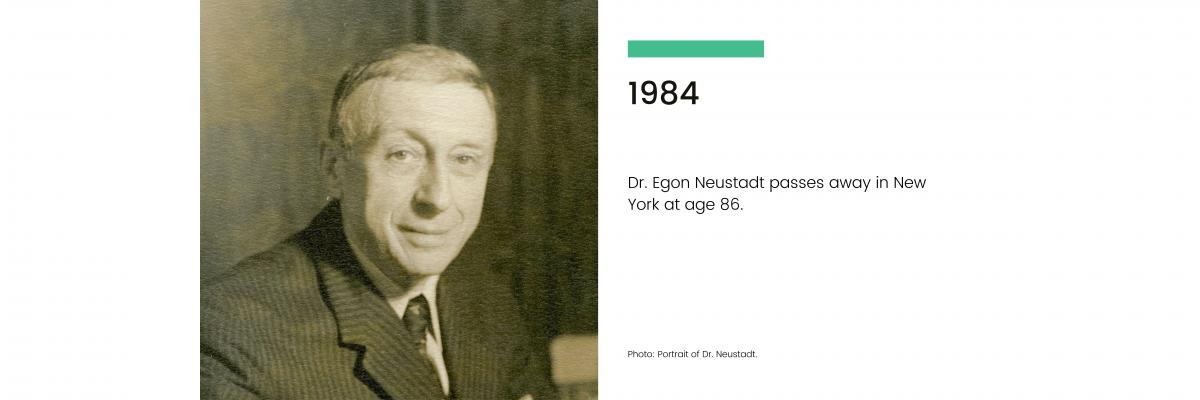Above: Dr. Egon Neustadt in his “apartment-museum”
© Mathew Brady
Meet the man behind the collection
Austrian immigrant Dr. Egon Neustadt (1898–1984) was among the earliest collectors of works by American artist Louis C. Tiffany (1848–1933). He purchased his first Tiffany lamp from a second-hand shop in Greenwich Village in 1935, when Tiffany’s designs were out of fashion and at odds with popular tastes. Newly married, he and his wife, Hildegard, were decorating their home in Flushing, Queens, and were searching for furniture. Egon recalled that while he measured dining room tables, Hildegard excitedly admired an old stained-glass daffodil lampshade that “gave a fascinating effect of real flowers growing in a real garden.” Their budget was limited, however, and the Neustadts had to leave the shade behind. But Hildegard eventually convinced Egon to return to the shop for a second look. Enamored of all things American, they were delighted to learn that the beautiful daffodil lampshade was made in the country they now proudly called home. They purchased the lamp for $12.50.
As Dr. Neustadt’s professional career as an orthodontist and real estate developer flourished, he acquired additional Tiffany lamps in all shapes, sizes, and patterns, as well as leaded-glass windows and bronze desk sets. In 1967, Egon had the foresight to purchase a treasure trove of opalescent sheet glass and pressed-glass “jewels” that were left over when the Tiffany Studios closed in the late 1930s. A few years later, he published The Lamps of Tiffany, a lavishly illustrated and indispensable guide documenting this glass and the range of lamp designs made at the Tiffany Studios.
Dr. Neustadt went on to amass the largest and most encyclopedic collection of Tiffany lamps ever assembled. A remarkable feature of the collection is that it contains multiple examples of a single lamp design. Thanks to the power of glass selection, each lamp is unique, making this a true connoisseur’s collection. Egon’s passion for Tiffany, coupled with his collecting foresight, played an important role in furthering interest in Tiffany lamps and greatly contributed to the preservation of Tiffany’s artistic legacy, which continues to captivate and inspire audiences today.
“We had no idea it was a Tiffany or who Tiffany was, but we bought it for $12.50 and took it home and I put it on my desk. Our friends didn’t like it.”
—Dr. Egon Neustadt

